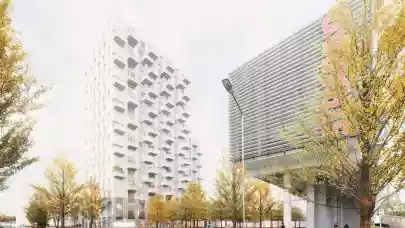
Investor interest is diversifying, with hotels and office properties being the most sought-after segments in H1 2025, and a growing trend of repurposing older office buildings into hotels or residential use, according to experts of Colliers Hungary.
Balázs Zelles-Görgey, Director, Head of Capital Markets at Colliers Hungary, noted that the investment market is showing signs of recovery after hitting a low in 2024.
Including the sale of the Marriott Hotel, investment volume reached €450 million in H1 2025, surpassing the total for all of 2024. He forecasts that total investment volume could reach €700–800 million this year. Hungarian investors remain the most active, representing 80% of the market.
A standout transaction was Erste Asset Management’s acquisition of two warehouse halls totalling 84,000 sqm, the largest logistics deal in Hungary's history. In H1 2025, hotels were the most sought-after segment (37%), followed by office buildings (32%) and industrial properties (25%). Prime office yields are estimated at 6.5%, prime logistics at 6.75%, and shopping centres and retail parks at 7%.
Anita Csörgő, Director, Head of Retail at Colliers Hungary, highlighted that while real wages increased by nearly 4% in the first five months of 2025, retail sales volume grew by only 2.6%. Tourism is providing substantial support to retail spending, with international overnight stays rising by 8.4% year-on-year.
The downtown high-street retail market is becoming increasingly active, with new brands signing leases. Rental rates for premium units on Váci Street have risen by 15% since early 2024, averaging at a monthly rate of around €160 per sqm. Retail parks continue to see strong demand, particularly from discount chains and grocery retailers, due to more favourable rental and operating costs.
In shopping centres, no new large-scale developments are currently in the pipeline, except for the complete redevelopment of Duna Plaza, which will span 48,000 sqm and be a more upscale, experience-focused destination.
Hungary's office market now has the highest vacancy rate in the region at 12.8%. This is primarily supply-driven, with approximately 700,000 sqm of new office space added to the existing stock of around 3.7 million sqm in recent years.
Miklós Ecsődi, Director, Head of Occupier Services at Colliers Hungary, noted that a one-off spike in vacancy is anticipated in 2026 due to government institution relocations. Speculative office developments currently under construction total 106,700 sqm, with 77% concentrated along the Váci Corridor. In H1 2025, net take-up exceeded lease renewals, a trend not seen for an extended period.
The industrial and logistics market is now facing oversupply, a significant shift after several years of dynamic expansion.
Tamás Beck, Director, Head of Industrial at Colliers Hungary, highlighted that the Budapest and surrounding agglomeration stock reached 3.87 million sqm, but vacancy rates have risen sharply to 13.4%.
Demand has also declined noticeably, with net absorption in the capital at -103,000 sqm. Major developers remain active, but the volume of future projects will largely depend on how demand evolves.



